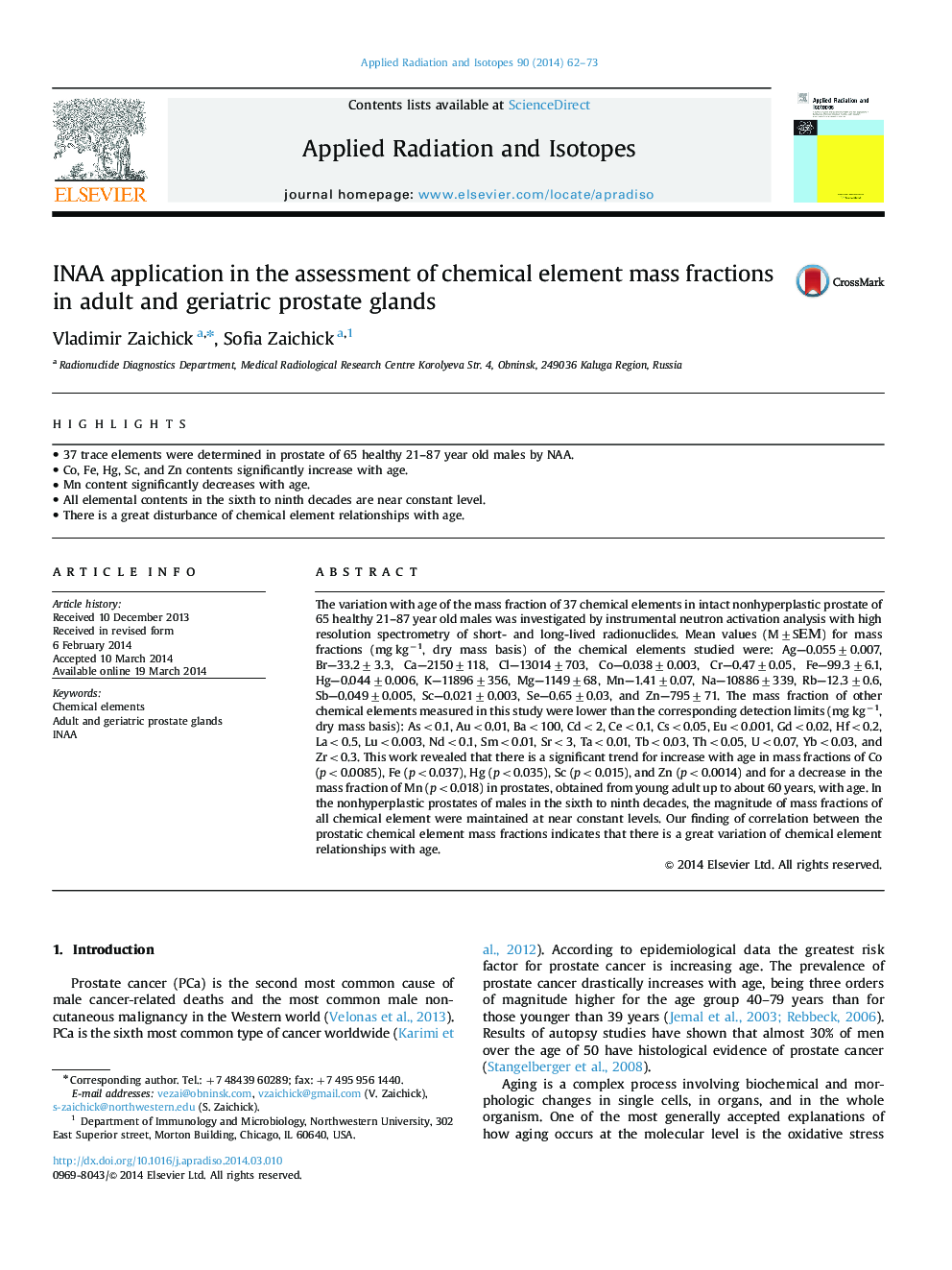| Article ID | Journal | Published Year | Pages | File Type |
|---|---|---|---|---|
| 8210155 | Applied Radiation and Isotopes | 2014 | 12 Pages |
Abstract
The variation with age of the mass fraction of 37 chemical elements in intact nonhyperplastic prostate of 65 healthy 21-87 year old males was investigated by instrumental neutron activation analysis with high resolution spectrometry of short- and long-lived radionuclides. Mean values (M±SÎÎ) for mass fractions (mg kgâ1, dry mass basis) of the chemical elements studied were: Ag-0.055±0.007, Br-33.2±3.3, Ca-2150±118, Cl-13014±703, Co-0.038±0.003, Cr-0.47±0.05, Fe-99.3±6.1, Hg-0.044±0.006, K-11896±356, Mg-1149±68, Mn-1.41±0.07, Na-10886±339, Rb-12.3±0.6, Sb-0.049±0.005, Sc-0.021±0.003, Se-0.65±0.03, and Zn-795±71. The mass fraction of other chemical elements measured in this study were lower than the corresponding detection limits (mg kgâ1, dry mass basis): As<0.1, Au<0.01, Ba<100, Cd<2, Ce<0.1, Cs<0.05, Eu<0.001, Gd<0.02, Hf<0.2, La<0.5, Lu<0.003, Nd<0.1, Sm<0.01, Sr<3, Ta<0.01, Tb<0.03, Th<0.05, U<0.07, Yb<0.03, and Zr<0.3. This work revealed that there is a significant trend for increase with age in mass fractions of Co (p<0.0085), Fe (p<0.037), Hg (p<0.035), Sc (p<0.015), and Zn (p<0.0014) and for a decrease in the mass fraction of Mn (p<0.018) in prostates, obtained from young adult up to about 60 years, with age. In the nonhyperplastic prostates of males in the sixth to ninth decades, the magnitude of mass fractions of all chemical element were maintained at near constant levels. Our finding of correlation between the prostatic chemical element mass fractions indicates that there is a great variation of chemical element relationships with age.
Keywords
Related Topics
Physical Sciences and Engineering
Physics and Astronomy
Radiation
Authors
Vladimir Zaichick, Sofia Zaichick,
